- with readers working within the Advertising & Public Relations and Property industries
- within International Law topic(s)
Welcome to Edition 31 of P2N0 covering the drive to avoid, reduce and remove greenhouse gas (GHG) emissions to progress to net-zero GHG emissions (NZE).
P2N0 covers significant news items globally, reporting on them in short form, focusing on policy settings and legal and project developments and trends. This Edition 31 covers news items arising during the period May 1 to May 16, 2025. Edition 32, covering May 17 to May 31, 2025, will be published on June 4, 2025.
P2N0 does not cover news items about climate change, M&A activity, or news items that are negative.
Access previous editions of P2N0 at bakerbotts.com.
| Content | |
| News headlines from May 1 to May 16, 2025 (pages 1 to 4) | |
| News from Around the World | |
| 1. Africa (p. 5) | 2. Middle East, Central Asia, & South Asia (p. 5 & 6) |
| 3. Americas (p. 6 & 7) | 4. APAC (p. 7 to 9) |
| 5. Europe and the UK (p. 9 & 10) | Helpful Publications and Data Bases (p. 10 to 12) |
| Baker Botts Team (p. 13) | |
HEADLINES FROM MAY 1 TO MAY 16, 2025
Opening observations:
During the first two weeks of May 2025 the following matters caught the eye:
- COP-30 taking shape: On May 8,
2025, the President-Designate of COP-30
published the second letter ahead of
COP-30. COP-30 is to be held in
Belém, Brazil from November 10 to
November 21, 2025. The second
letter outlines the "four fronts of action" to
take place ahead of COP-30, concentrating on the
"first front of action":
- Global Mobilization or Global Mutirão;
- The Action Agenda;
- Formal UNFCCC negotiations; and
- The Leaders Summit.
- AI and energy: On May 12,
2025, the IEA published AI has the potential to transform the energy
sector, a short form follow up to its publication Energy and AI. This provides a high-level
orientation to AI and energy. The publication prompted the author
to re-read Energy and AI.
By way of reminder, some of the key facts and stats from Energy and AI are:- In 2024 data centres accounted for around 1.5% (or 415 TWh) of electrical energy consumption globally;
- The US, China and Europe have the largest electrical energy consumption by data centres, with 45%, 25% and 15% respectively, i.e., they account for 95% of global electrical energy consumption by data centres;
- By 2030 it is estimated that consumption of electrical energy by data centres will increase to 945 TWh annually;
- In the US, data centres will account for around half of the estimated increase in electrical energy demand, and by 2030 data centres will consume more electrical energy that facilities producing aluminium, cement, chemicals and iron and steel; and
- Data centres will source electrical energy from renewable, natural gas and nuclear sources. It is estimated that around half of the electrical energy demand of data centres will be matched by renewable electrical energy sources and electrical energy storage. With natural gas and nuclear to provide the balance of supply to match the balance of demand.
- Methane is a challenge: On 7 May
2025, the International Energy Agency
(IEA) published its Global Methane Tracker 2025.
Methane (CH4) is one
of the big three greenhouse gases and one of the
three, what are termed, well-mixed greenhouse
gases.
The Global Methane Tracker 2025 lays out the basic facts:
- CH4 is responsible for 30% of the increase in global average temperatures since the 1850s;
- The energy sector is responsible for 35% of GHG emissions arising now. Avoidance and reduction in GHG emissions from the energy sector offers a present and ongoing opportunity to reduce the pace of climate change.
- The energy sector is responsible for around 120 million metric tonnes of CH4 emissions annually, and while each of the AFOLU sector and the waste sector is responsible for material quantities of CH4 emissions, the avoidance and reduction of CH4 emissions across the energy sector offers the most immediate means of abatement;
- The natural gas and oil sectors give rise to 80% of the CH4 emissions covered by pledges to avoid and to reduce GHG emissions globally. To date, the implementation of pledges has not been as hoped, and there needs to a focus on implementation;
- CH4 emissions are under-recorded, with a gap of up to 80% of actual CH4 emissions to recorded emissions. The gap is known: the gap is not a concern in terms of being able to determine CH4 in the climate system, rather the gap is a concern in identifying source GHG emissions, and abating them; and
- There is money capturing CH4 emissions: the IEA notes that if the CH4 emissions are captured rather than emitted this could result in an additional 100 billion m3 of natural gas for sale.
- CMM thinking starting to coalesce: On
May 7, 2025, the CSIS (at https://www.csis.org, under G7 Cooperation to De-Risk Minerals Investments in
the Global South) reported that all G7 member
countries regard the security of supply of critical metals and
minerals (CMM) as a strategic imperative.
CSIS reports on the progress that has been made by
China across the Global South
(and the means that China has to mitigate risks) and hazards the
view that there may be benefit in G7 countries
working together to derisk the level of investment needed to
develop secure CMM supply chains.
CSIS states that:- the level of combined investment for these purposes is USD 590 billion to USD 2 trillion by 2040: the actual level of investment provided by G7 governments is in the region of USD 13 billion. The good folk at CSIS suggest that the G7 should establish a G7 Critical Minerals Investment Fund;
- recounts the existing G7 initiatives:
- The Partnership for Global Infrastructure and Investment (PGI);
- The Minerals Security Partnership (MSG),
- Pooling of capital by G7 member states;
- Selection of strategic projects to allow the development of supply chains to make use of refining and production capacity; and
- Offtake agreements signed by members of G7 under which G7 members function as wholesale buyers of CMM.
- the Critical Minerals Institute (CMI), CMI Critical Minerals List 2025. The publication is well-worth a read, describing 23 CMMs1 that are essential to progress in sectors key to defence and environmental security, and the geographical source of them (including the US, Canada, and Australia). Of the 23 CMMs, five are distinguished as Key Strategic Minerals: 1. Cobalt; 2. Copper; 3. Gallium; 4. Rare Earth Elements; and 5. Uranium; and
- the US Geological Survey (USGS), the Geological Survey of Canada, and Geoscience Australia, published the Critical Minerals in Ores – geochemistry database (CMiO) as part of a Critical Minerals Mapping Initiative (CMMI).
- the African Minerals Development Centre (an entity of the African Union), Africa's Green Mineral Strategy.
- Pragmatism continues with proposed ISSB
updates: As noted in recent editions of
P2N0, there appears to be a
move to reducing the complexity, and as such simplifying, of
climate disclosure standards. The International
Sustainability Standards Board (ISSB) has
issued its proposed amendments to make clearer the basis and reason
for reporting.
ISSB proposes the amendments in the following areas:- The measurement and disclosure of Scope 3, Category 15, GHG emissions as they relate to derivatives and financial activities;
- The use of the Global Industry Classification Standard in respect of disclosure of information about financed emissions;
- The use of a method of measuring GHG emissions other than the Greenhouse Gas Protocol: A Corporate Accounting and Reporting Standard (2004); and
- The use of Global Warming Potential (GWP) values other than the GWP values based on a 100-year time horizon.
Headlining publications:
During May 2025, the good folk at The International Energy Agency (IEA) published Global EV Outlook 2025. The headlines from the publication are:
- 17 million EVs were sold in 2024 or 20% of car sales;
- 11 million EVs were sold in China in 2024, with 1 in 10 of cars in China being EVs;
- Growth in EV sales is expected to continue, both in absolute and percentage terms;
- Global trader in EVs is increasing as EV manufacturers develop new markets;
- As a general statement, competition is increasing and as such EVs are becoming more affordable; and
- As a general statement, increasing charging coverage capacity supports EV adoption.
The publication is data and information rich, and well-worth a read for both personal and professional interest.
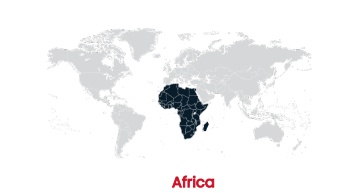
- Scatec breaks ground: On May 15, 2025, it was reported widely that Scatec had commenced construction of its 1.1 GW Obelisk photovoltaic solar project in Egypt, with associated 100 MW / 200 MWh BESS. Once completed, this will be the largest photovoltaic project in Egypt (and Africa).
- Engie powers up: On May 2, 2025, it was reported widely that Engie had commenced commercial operation of its 500 MW Red Sea Wind Farm, in Egypt. This is the largest wind farm in Africa.
- Further interconnection: Zambia is to develop a 200 km, USD 270 million interconnector to transmit electrical energy to the Democratic Republic of Congo (the Kalumbila-Kolwezi Interconnector Project or KKIP). The development of the KKIP is interesting of itself, and because it follows the USD 292 million Zambia-Tanzania-Kenya interconnector project.
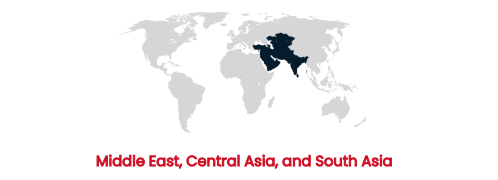
- Large REE find in Kazakhstan: On May 16, 2025, the good folk at earth.com (at www.earth.com, under Rare earth deposit believed to be the third largest in the world has been discovered) reported that the Ministry of Industry and Construction in Kazakhstan had announced: "Four prospective areas have been identified ... with total estimated rare earth reservices reaching 935,400" metric tonnes. As reported, the resource is in the Karagandy region of Kazakhstan. This news item continues a series of news items from Central Asia around CCM and REE.
- Investment opportunities in Georgia: On
May 8, 2025, the International Renewable
Energy Agency (IRENA) published Investment Opportunities for Utility-Scale Solar
and Wind Areas. The publication is part of the IRENA Global
Atlas For Renewable Energy series. The publication may be regarded
as a mapping and zoning paper – surveying Georgia to provide
a guide on the location and scale of development
opportunities.
By way of reminder: Edition 30 of P2N0, reported that:"On April 16, 2025, IRENA published its Energy transition assessment: Georgia. The publication provides a helpful appraisal of the energy transition potential of Georgia, it is both thorough and timely. Georgia has considerable bioenergy and hydroelectric capacity, and even greater geothermal, photovoltaic solar and wind capacity development potential.For complementary reading, see the IRENA publication, Green Hydrogen For Industrial Decarbonisation: Central Asia and the South Caucasus. - Coal India Limited (CIL) and AM Green aligned:
On May 9, 2025, the good folk at
hydrogeninsight (at www.hydrogeninsight.com, under Largest green hydrogen deal yet? Coal India agrees
to supply 4.5GW of renewables for green hydrogen production)
reported that CIL and AM Green
had entered into a memorandum of understanding to provide a
framework under which CIL will supply 4.5 GW of renewable
electrical energy (photovoltaic solar, 2.5 to
3 GW, and wind, 1.5 to 2
GW) to AM Green for the production of
green hydrogen and ammonia.
As reported, the development of the renewable electrical energy capacity will be undertaken over a number of years.
In passing, it is noted that ArcelorMittal recently commenced the supply of renewable electrical energy from its 1 GW Andhra project to AM Green.
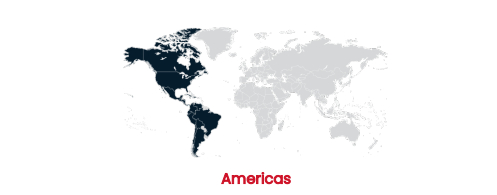
- Indiana at pace: During the second full week of May 2025, it was reported widely that Indiana's 1 GW Mammoth Solar Project is now "a go" following the issue of a full notice to proceed by Doral Renewables, project developer, to Bechtel, contractor for the design and construction of the project.
- PJM fast-tracks 11.8 GW to bolster power
supplies: On May 5, 2025, the good folk
at utility dive (at https://www.utilitydive.com, under PJM fast-tracks 11.8 GW, mainly gas, to bolster
power supplies) reported PJM Interconnection selected
51 projects to join a fast-track interconnection
review process as part of a broad effort to ensure that the grid
operator has adequate supplies [of electrical energy to ensure the
integrity and stability of the transmission system]".
As reported (and as may be expected), gas-fired power generation accounts for 69% of the capacity selected, BESS 19 %, and nuclear 12% (with 0.1% coal), with 90% of the projects to be operating by 2030. The article is well-worth a read. While the article goes to the integrity and stability of the PJM grid, the underlying need that is explained is relevant for most transmission systems. - Time in the sun: On May 5, 2025, it was reported widely that Filo del Sol, in which BHP and Lundin Mining are in joint venture, ore body is estimated to have a mineral resource of up to 13 million tonnes of copper and gold (and silver). This is a world scale mineral resource.
- Meta provides a sense of the scale of digital infrastructure development: On May 2, 2025, the good folk at datacenterdynamics (at https://www.datacenterdynamics.com, under Meta raises AI data center capex forecast to up to $72 bn) reported that Meta expects its 2025 capital expenditure to increase to between USD 64 billion and USD 72 billion. In the first quarter of 2025, Meta spent USD 13.7 billion, primarily on servers, data centers, and network infrastructure.
- TotalEnergies progresses green hydrogen project in
Chile: On May 5, 2025, it was reported
widely that TotalEnergies had submitted an
environmental impact assessment in respect of its proposed
USD 16 billion green hydrogen and green ammonia
project in the south of Chile, in the vicinity of
Tierra del Fuego (having some of the best onshore wind resources in
the world).
As reported, the project will encompass 4,000 hectares of on shore wind turbines to generate renewable electrical energy to power electrolysers to produce green hydrogen then combined with nitrogen to produce 1.9 million metric tonnes of green ammonia a year. Connecting news items from 2022 and 2025, the green ammonia will be shipped to northern Europe, with the green ammonia then cracked to derive green hydrogen to be transported across the hydrogen pipeline network being developed.
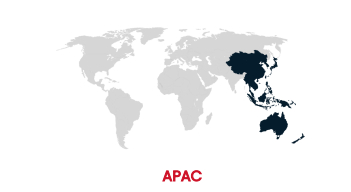
- China's Q1 GHG emissions fall: On May 15, 2025, it was reported widely that during the first quarter of 2025 GHG emissions declined by 1.6% across China, and 5.5% across the power sector in China, yearon-year (compared to Q1 of 2024). This decline is notable of itself and because year-on-year electrical energy consumption across China increased by 2.5%. Among other things, what this indicates is that the rate of development of renewable electrical energy capacity is such that it is exceeding the rate of increase in electrical energy consumption.
- Key to unlock grid: On May 15, 2025, the good folk at Ember published Wired for profit: Grid is the key to unlock ASEAN energy investment. The publication provides a punchy assessment of the benefits that could be realised across the 10 ASEAN nations through the development interconnectors to transport electrical energy cross-borders. The publication is well-worth a read.
- South Korea announces new tenders for
hydrogen: On May 9, 2025, the
Government of South Korea came to market with two new
tenders for the supply of hydrogen for use to generate electrical
energy. As reported, one tender is for "clean
hydrogen"2 and the second for
"general hydrogen", with both clean and
general hydrogen (and hydrogen-derived fuels from either of them)
eligible to participate in the tender.
By way of reminder: Edition 22 of P2N0 reported on the first tender process (under KOSPO left at lone bidder) as follows: "On November 22, 2025, Korean Southern Power Co., Ltd (KOSPO) announced that it was the only corporation selected to participate in the bidding process for electrical energy using clean hydrogen to be undertaken by the Korean Power Exchange for the Clean Hydrogen Energy Portfolio Standards (CHPS). As reported, the reason that KOSPO is the only corporation is that it is the only corporation that was able to satisfy the confidential price cap". - Green Hydrogen Surge in China: On May 8, 2025, the good folk at fuelcellworks (at https://fuelcellworks.com, under China's Green Hydrogen Surge: 2025 Electrolyser Orders Already Outpace Entire 2024) reported that in the first four months of 2025 (2.4 GW) electrolyser orders in China had exceeded the number of orders for the whole of 2024 (2.37 GW). This is good news and provides a contrast with the slow-down and the cancellation of green hydrogen projects elsewhere.
- ExxonMobil and Marubeni sign BH2 offtake: On
May 8, 2025, it was reported widely that
ExxonMobil and Marubeni
Corporation had entered into an offtake agreement under
which ExxonMobil is to supply and
Marubeni is to offtake 250,000 metric
tonnes of blue hydrogen (BH2).
The BH2 will be supplied from
ExxonMobil's Baytown Project, on the
Gulf Coast.
As reported, Marubeni will supply the BH2 to Kobe Steel, with Kobe Steel to use the BH2 to co-fire with coal at its coal-fired power station in the vicinity of Osaka, Japan.
By way of reminder:Edition 10 of P2N0 reported that on March 25, 2024, "ExxonMobil and JERA had agreed to assess jointly the development of a low-carbon hydrogen and ammonia production project. As reported, JERA may contract to offtake up to 500,000 metric tonnes a year of low-carbon ammonia from the ExxonMobil Baytown Complex. As noted, below JERA is testing the use of blue ammonia to cofire with coal to reduce the CO2 arising from its Hekinan coal-fired power generation". - Indonesia includes 10 GW of nuclear capacity by
2040: On May 1, 2025, it was reported
widely that Indonesia expects to develop 10 GW of
nuclear generating capacity, and to start to award contracts for
the development of this capacity by 2030. The installation of
10 GW of nuclear generating capacity would be part
of the plan to increase installed electrical energy capacity across
Indonesia from 90GW to 195 to 200 GW by 2040.
By way of reminder, in Edition 20 of P2N0, on November 11, 2024, Climate Envoy for Indonesia, Hashim Djojohadikusumo, announced that Indonesia intends to develop 100 GW of electrical energy capacity through 2040, of which 75 GW will be renewable electrical energy, representing a little more than the current installed electrical energy capacity of Indonesia at 90 GW.
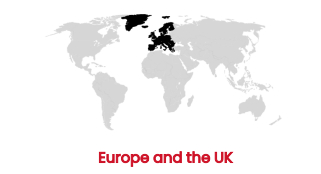
- CCS project selected for funding in Denmark: On May 16, 2025, the Danish Energy Agency announced that 10 CCS projects were to receive up to DKK 28.4 billion (around €3.7 billion) in government funding support. The 10 CCS projects comprise 1 cement plant, 2 biomass combined and heat and power projects, and 7 waste-to-energy projects. If all projects are developed up to 5.3 million tonnes of CO2 will be sequestered from them.
- Interatec produces e-fuels from green hydrogen and
bio-genic CO2: On May 16,
2025, it was reported that German corporation
Interatec had produced e-diesel
and e-SAF from green hydrogen and biogenic
CO2. As drop-in fuels, the
e-diesel and e-SAF can be used
with fossil fuel equivalents.
It is anticipated that the production of drop-in fuels will increase as EU Member States move to meet their renewable fuel of non-biological origin (RFNBO) targets. - First CO2 captured at Brevik: On
May 12, 2025, SLB Capturi
announced that the first 1,000 metric tonnes of
CO2 had been captured and liquified and
were in intermediate storage at the Heidelberg
Materials cement facility in Brevik,
Norway. The carbon capture facility reached mechanical
completion in December 2024 and is now capturing
CO2 to progress to the design capacity
of 400,000 metric tonnes a year.
In due course, the CO2 in intermediate storage will be transported to the North Lights CCS Project for injection and storage permanently. The capture, transportation and storage comprise the CO2 value chain that is termed the Longship Project.
The carbon capture plant uses Big Catch technology and is the result of a long-standing collaboration between Heidelberg Materials and SLB Capturi. - France consults on the transposition of Renewable
Energy Directive III (RED III, i.e.,
EU Directive 2023/2413) into French
law: On May 14, 2025, the good folk at
hydrogeninsight (at www.hydrogeninsight.com, under France sets out aggressive targets and penalties
for green hydrogen use transport by 2030) reported that is
proposing that green hydrogen and derivatives of green hydrogen
should fuel 1.5% of consumption in across the
transport sector by 2030.
If this proposal is accepted, it will exceed the RED III requirement of 1% of all transport fuels (including aviation, rail, road, and shipping) to be RFNBO. - A timely reminder: On May 8, 2025, the good folk at peterson solutions (at https://www.petersonindonesia.com under European Commission Recognises Updates ISCC EU under RED III) reported that on May 5, 2025, the European Commission issued a positive technical assessments for the updated ISCC EU System Documents. The updated documents are consistent with the requirements under RED III and provide a transparent basis for certification. From May 21, 2025, all ISCC EU audits must comply with these requirements.
- Phosphate discovery in Norway: On May 6, 2025, the good folk at dailygalaxy.com (at www.dailygalaxy.com, under Geologists Uncover World's Largest Phosphate Deposit Worth $12 trillion in Totally Unexpected Location) reported that Norge Mining had reported the discovery of a mineral resource of up to 70 billion metric tonnes of phosphate. The discovery is not new (2018), but its implications continue to develop. While phosphate is best known as a feedstock for fertilizer, it is a CMM used in batteries, EVs and solar panels,
- Stegra steel resolve: On May 5, 2025, it was reported widely that Stegra had taken delivery of 740 MW of electrolyser capacity (37 20 MW alkaline electrolyser modules) to produce green hydrogen to provide high-heat temperature for its €6.5 billion green iron and steel mill in Boden, Sweden.
- OCDE – What to expect from the EU CBAM? The good folk at OCDE have published a punchy paper to provider headlines to foreshadow the impact of the Carbon Border Adjustment Mechanism by the European Union – What to expect from the EU Carbon Border Adjustment Mechanism? The publication is a helpful aide memoire, that includes details of further reading.
HELPFUL PUBLICATIONS AND DATA BASES
In addition to publications covered by this edition of P2N0, the most noteworthy publications read by the author during the first two weeks (and a bit) of May 2025 are:
- IEA podcasts: In its own words, the IEA "has launched a new podcast series! It's a great way to get quick insights into our latest publications and energy analysis – perfect for podcast lovers". The first podcast is based on the IEA Global Energy Review.
- Less smoke, more mirrors! Experience from JETP
initiatives: During the first part of May
2025 the good folk at the International Network of
Just Transition Think Tanks (INETT)
published Just energy transitions in developing countries
– Experience from JETP countries.
The frame of the publication is that which is just and the concept of what is required for a just energy transition. Without wishing to devalue this frame, for the author the key issues for Indonesia, Senegal, South Africa, and Vietnam (as countries that have entered into JETP Agreements), are:- Ever-greater levels of communication and transparency are required among the parties to JETP Agreements, with clear and consistent definitions of the development of specific renewable electrical energy projects in the developing countries, under rolling three programs, that have clear lines of sight to funding, domestic and international to financial close;
- Ever-greater levels of communication and transparency are required once projects achieve financial close, with the provision, publicly, of data and information that reports on the objective of each project, project milestones and the achievement of them, what is being done to mitigate any delay, and reporting on the outcomes achieved against the objectives planned; and
- Ever-greater levels of standardisation and transparency to report data and information through the life cycle of each project, and standardised documentation to increase speed of deployment of capital for, and development of projects, and in so doing to reduce transaction costs.
- By way of reminder: Edition 30 of P2N0 (under Vietnam approves
Amended PDP8) reported that:
"On April 15, 2025, Vietnam published its amended PDP8 – the Revised National Power Development Plan for 2021-2030, with a forward-looking perspective to 2050 (PDP8). In the context of the purpose of P2N0, the key takeaway is: GHG emissions from electrical energy generation are to be capped at 197 – 199 million metric tonnes of CO2 by 2030, representing a reduction of 27 million metric tonnes from current business as usual, and 170 million metric tonnes of CO by 2030 if JETP is utilized in full. In the context of PDP8, it would seem that the aim is to phase out use of coal by 2050: by 2050, the power mix will comprise approximately 74 to 76% of renewable energy. Under the forward-looking perspective is Total Capacity of 490,529 MV to 573,129 MW, comprising:
- photovoltaic solar of 168,594 MW to 89,294 MW (33% to 34.4%);
- offshore wind 70,000 MW 91,500 MW (14.3% to 16%); and
- offshore wind 60,050 MW to 77,050 MW (12.2% - 13.4%),
- Unlocking Opportunities in Emerging Markets:
During the first two weeks of May 2025, the
Energy Sector Management Assistance Program and
the International Finance Corporation published Unlocking Opportunities: A Framework for Assessing
Green Hydrogen Potential in Emerging Markets.
The publications develop thinking from World Bank publications, Green Hydrogen in Developing Countries, and Scaling Hydrogen Financing for Development. While the publication conveys a sense of the potential of green hydrogen, the potential is not overstated. The publication is worth a read. - Pipelines for hydrogen transport: A continuing
theme since mid-2020 has been how will hydrogen be transported.
Initially, thinking involved the use of ocean-going carriers. As
the mathematics and physics of this became apparent, thinking has
settled on the production and use of hydrogen domestically in the
first instance, and the import of hydrogen using pipelines. In this
context, two fundamental issues arise:
- First, the impact of the prices to transport hydrogen on the cost of the development of hydrogen transportation infrastructure; and
- Secondly, the integrity and safety of hydrogen transportation infrastructure.
- The Dutch Authority for Consumers and Markets (ACM) has pointed out that the prices to transport hydrogen will be high in the absent continuing government support – see H2 View: ACM warns Dutch hydrogen tariffs could rise without urgent support or Fuel Cell Works: Dutch Regulator Warns Hydrogen Transport Costs to Spike Without Immediate Government Action.
- The European Commission publication, Pipelines for hydrogen transport: A review of integrity and safety challenges. This publication guides the reader through the key issues. There is nothing new in the subject matter, rather it provides a relatively deep dive into the issues that are specific to pipelines.
- Pipelines for CO2 transportation: The good folk at the Carbon Capture & Storage Association published a position paper entitled An EU regulatory package on CO2 transport infrastructure. The publication is well-worth a read. It will not be a surprise that issues similar to those that arise in respect of the hydrogen transportation arise in respect of CO2, noting that the issue of safety is a lesser issue with CO2 than with H2.
- The author had cause to use the Carbon Market Regulations Tracker during the first part of May 2025. The tracker is a user-friendly means of reminding the user of the regulatory frameworks in respect of carbon credits and carbon offsets. The tracker is funded by the German Federal Ministry for Economic Affairs and Energy (BMWK).
Footnotes
1 The CMMs listed are:
1. Bauxite, High Purity Alumina, and Aluminum;
2. Antimony; 3. Beryllium;
4. Bismuth; 5. Cobalt;
6. Copper; 7. Gallium;
8. Germanium; 9. Graphite;
10. Indium; 11. Lithium;
12. Magnesium; 13. Manganese;
14. Nickel; 15. Niobium;
16. Platinum metals; 17. Rare
Earths Elements (REEs); 18.
Silicon and Silicon metals; 19. Tantalum;
20. Titanium and Titanium metal;
21. Tungsten; 22. Uranium; and,
23. Vanadium.
Edition 29 of
P2N0 stated that there are
17 REEs as follows: Cerium (Ce), Dysprosium (Dy),
Erbium (Er), Europium (Eu), Gadolinium (Gd), Holmium (Ho),
Lanthanum (La), Lutetium (Lu), Neodymium (Nd), Praseodymium (Pr),
Promethium (Pm), Samarium (Sm), Scandium (Sc), Terbium (Tb),
Thulium (Tm), Ytterbium (Yb) and Yttrium (Y).
To provide some context given the progress that the US is making
on promoting the development of CMM and REE production
(domestically and internationally), further reading that will be
helpful may be found at How to Advance US – Africa Critical
Minerals Partnerships in Mining and Geological Sciences, published
at https://carnegieendowment.org.
2 The Government of Korea defines clean hydrogen as hydrogen with 4 kg of GHG emissions (or less) per kg. The Clean Hydrogen Certification System measures GHG emissions from production of hydrogen, and if the GHG emissions equal of less than the prescribed threshold, the hydrogen will be certified. The implication of being certified is that it allows participation in the clean hydrogen power generation bidding process (under the KPX). The CHPS mandates the purchase of electrical energy generated from clean hydrogen.
3 In addition to Vietnam, countries, with developing economies that have signed JETPs are Indonesia, Senegal and South Africa.
The content of this article is intended to provide a general guide to the subject matter. Specialist advice should be sought about your specific circumstances.














